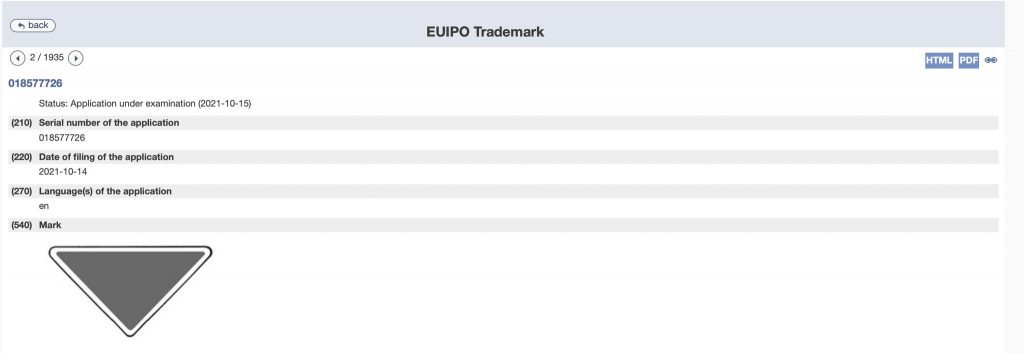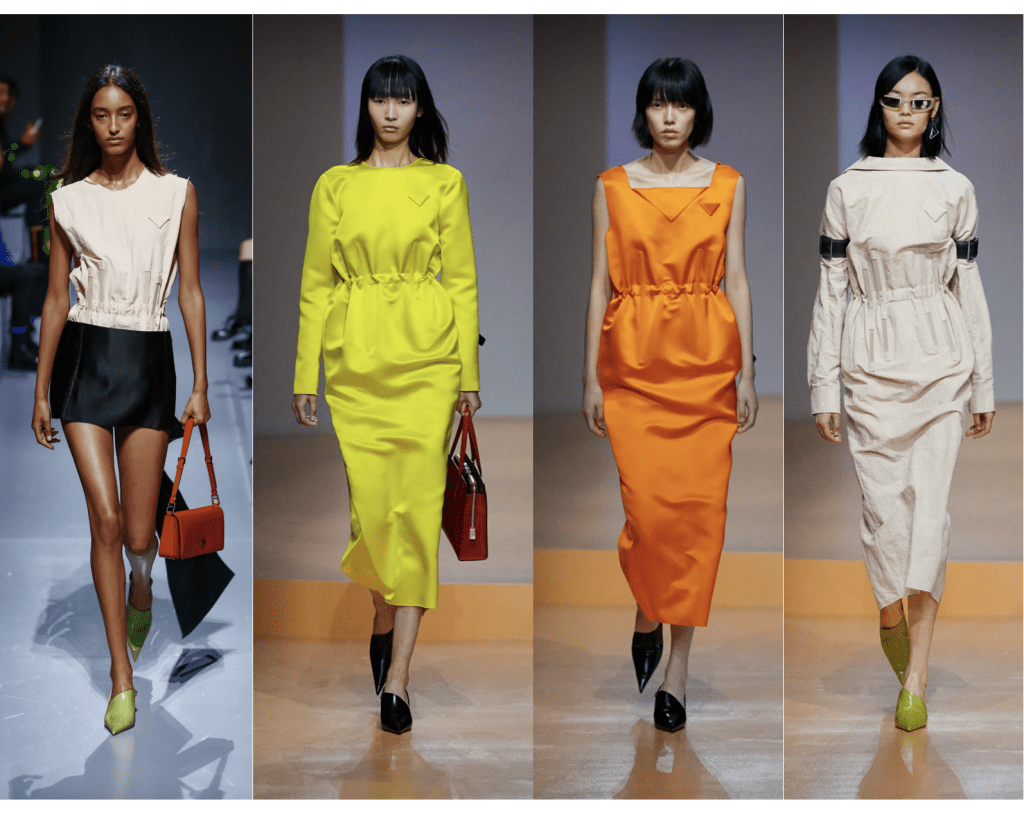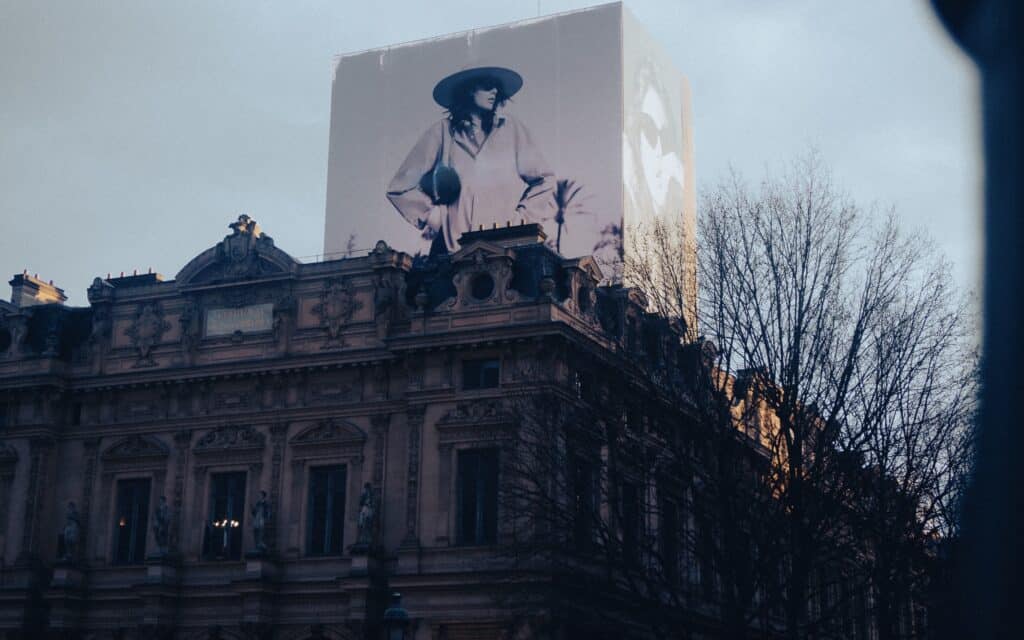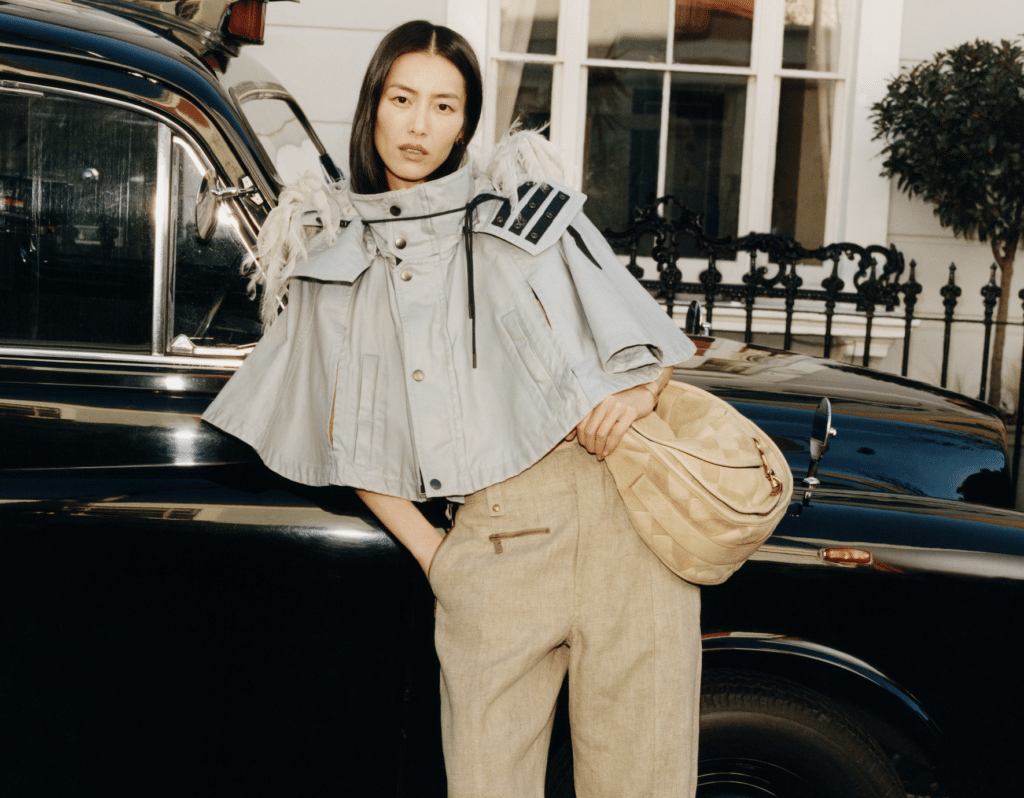For their first physical runway show since they teamed up to take on the top creative job at Prada, longtime creative director Miuccia Prada and new partner Raf Simons, who joined the Milan-based brand last year, simultaneously sent out nearly 40 looks on models in Milan and in Shanghai in furtherance of a presentation that Mr. Simons and Mrs. Prada called “a new possibility” with an emphasis on the notion of “community” – even if that community is represented, in part, on large LED screens.
Looking beyond the set-up, there was one element, in particular, that jumped out in the collection: the continued adoption and emphasis on a pared back version of the Prada triangle that the brand has affixed to its bags and other accessories for several decades, and that has become synonymous with the cult-favored fashion house. As we previously noted, Prada’s uses of its trademark triangle to date have been largely uniform in that the flipped triangle is placed on garments and accessories – complete with the words “PRADA Milano,” along with “DAL 1913,” which is a nod to brand’s founding year, and a tiny coat of arms included within the bounds of the shape.
In more recent seasons, however, as Prada’s triangle logo has been readily coursing through its collections, the use of its tried-and-true triangle has been supplemented the same little triangle symbol, albeit on its own – i.e., sans the Prada name and/or other identifying information. An empty triangle appeared on the invitations for the brand’s Fall/Winter 2021 show, and the side of hats in one of the brand’s 2020 menswear collections, and also on garments for Spring/Summer 2021. Fast forward a year to S/S 2022 and the use of the blank triangle – or in some cases, a triangle that simply bears a single word, Prada – was more consistent than ever before. Nary did a look or two go by without an almost bare triangle adorning a pointy-toe slingback, earring, arm band, or the left breast of a top or dress.
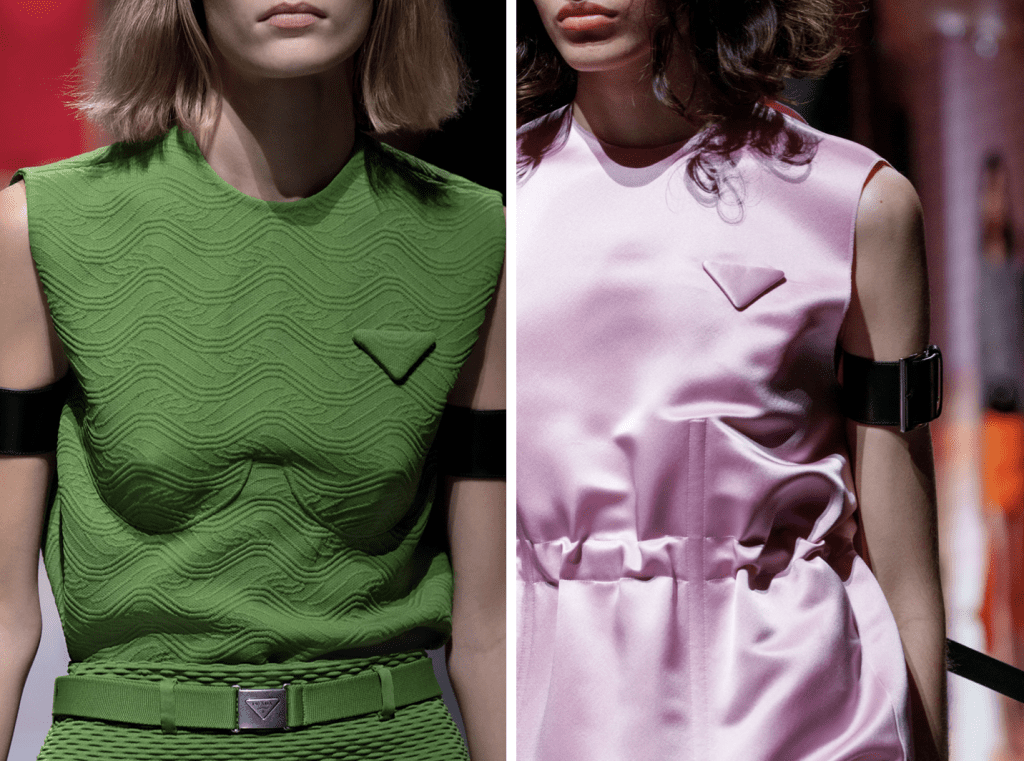
As I documented in a previous article, the most immediate read of the room here is that Prada is looking to expand its rights in the triangle trademark. Because the vast majority of its uses of the mark to date have included the Prada name and the “Milano,” “DAL 1913,” etc. details, its rights are almost certainly limited to a mark depicting those various details (or confusingly similar iterations thereof). By putting forth a pared back version of that triangle (which can probably be likened to some extent to how brands across the board adopted streamlined versions of their word marks not all that long ago), Prada is doing something interesting: it is potentially setting itself up to enjoy more expansive rights in the little logo, and to (at least theoretically) enforce those rights against the use of similar triangle designs in instances when the “PRADA Milano,” “DAL 1913,” and the tiny coat of arms are missing from the equation. And there are increasingly many instances of this – from blatant fast fashion copies to uses of triangle configurations by similarly-situated high fashion brands that may confuse consumers as to source.
This is a likely driver behind the introduction and increasingly consistent use of more pared back takes on the triangle by Prada. In fact, in furtherance of what appears (to me) to be a larger effort to expand its rights in the triangle logo, Prada filed a trademark application for registration for a simplified (although, not completely blank) triangle mark with the European Union Intellectual Property Office (below, middle) in June. It has also filed a few applications for registration for streamlined triangle marks in the U.S., such as this one, in connection with its recycling initiative. And not to be overlooked, back in 2012, counsel for Prada filed a (since-issued) application for registration for a stylized blank multi-triangle mark (below, far right) for use in Class 18 and 25. It is worth noting that Prada’s rights in the latter mark, which essentially consists of not one but three triangles, are likely quite narrow due to the stylization at play.
This string of applications/registrations may ultimately pave the way for the brand to claim potentially robust rights in its specific use of a completely blank triangle mark sans any other markings – in connection with specific goods/services – in the U.S. and other markets at some point down the road … assuming that Prada can show that the triangle is “used in such a way as to make such a visual impression that the viewer would see it as a symbol of origin separate and apart from everything else,” as a New York federal court judge put it back in 1998.

But there is probably more going on here than an incremental rights grab by Prada; it is likely a growth-oriented cash grab, too. It is worth noting that Prada’s adoption of streamlined branding in recent seasons has not come in lieu of its use of more traditional branding. In fact, the blank or partially blank triangles appear in collections along with the brand’s more traditionally-branded triangle offerings (i.e., triangles with the Prada name, Milano, DAL 1913, etc.). With this in mind, it seems that Prada may be looking to cast a wider net. In other words, by diversifying its offerings (including by varying its approach to branding), Prada can cater to a wider pool of luxury shoppers and their often-diverging tastes.
Given the sheer size of the luxury goods market and the varying apparel and accessories appetites and demands of the globe-spanning consumers within it, it is realistic to assume that different people will want different things from the same brand. (This arguably makes any sweeping declarations about whether things like bold branding (think: logo mania) are “in” or “out” during any given season seemingly irrelevant.) Look no further than the Chinese market, where a shift will inevitably play out in light of the government-initiated push for “common prosperity,” which is expected to prompt consumers to distance themselves from ostentatiously-branded luxury goods, at least for the foreseeable future. At the same time, President Xi Jinping’s latest crackdown on the wealth inequality in China is unlikely to push consumers in the West to do away with logos right now. As such, in order for billion-dollar-plus brands to continue to pursue seemingly unending grow in what is an increasingly fragmented global market, they have to diversify their offerings – potentially within each collection.
(Most big brands are already doing this, of course. Louis Vuitton, for instance, has been known to target the Asian market with bags made from more exotic materials than some other markets due to established consumer preferences.)
As a final note, since most big and/or conglomerate-owned luxury brands’ revenues and margins are generated from the high-volume turnover of branded products, indicators of source – such as visible brand names, logos, monograms, red zip ties, etc. – are not going away any time soon. So, while Prada’s blank triangle may be a relatively pared back bit of branding, it is being used as branding, nonetheless, and chances are, it still serves to indicate the source of someone’s dress or purse – albeit in a slightly more discrete way way – to consumers who are in the know.
This article has been updated to reference an EU trademark registration held by Prada for a stylized triangle trademark configuration, and to make mention of the following application, which was filed a week after the initial publication of this article …
